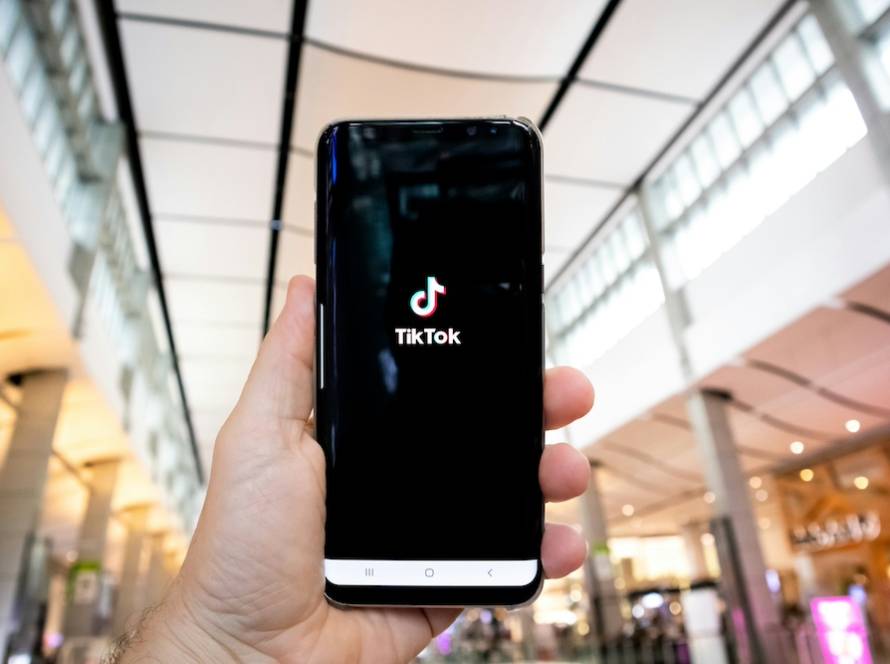The digital advertising landscape is undergoing a fundamental shift as the industry moves towards a more privacy-conscious era. The demise of third-party cookies, increased data regulations, and heightened consumer expectations for data privacy have forced advertisers to rethink their strategies and adapt to this new reality. In this blog post, we explore the future of advertising in a privacy-first world and uncover the emerging solutions that are shaping the path forward.
The Limitations of Traditional Audience Targeting
For years, digital advertising has relied heavily on predefined audience targeting, which often sacrificed accuracy for simplicity. The rise of lookalike modeling represented a significant advancement, allowing brands to expand their reach by identifying users with characteristics similar to their core audience. However, as the industry transitions to a cookie-less future, these traditional targeting methods are proving increasingly unreliable and ineffective.
The Opportunities in a Cookieless World
The end of third-party cookies has long been a source of anxiety for the advertising industry, with many fearing it would lead to a cataclysmic shift in digital marketing. However, as the deadline for Google’s planned cookie deprecation nears, a surprising narrative has emerged: the cookie’s demise could actually be a win for ad tech vendors. While the loss of third-party cookies will undoubtedly disrupt the traditional ad tech ecosystem, many vendors have seized the opportunity to develop alternative solutions and strengthen their market position.
LiveRamp, for example, has spent the past four years building its own ID graph, allowing marketers to continue targeting ads effectively without relying on traditional cookies. The company’s CEO, Scott Howe, has even urged the industry to move away from cookies, as LiveRamp’s position as a Google partner for the PAIR cookie-less targeting solution and its recent acquisition of Habu (a leading data clean room provider) have solidified its standing in the market.
Similarly, PubMatic has scaled its marketplace around environments that are less dependent on third-party cookies, such as connected TV (CTV), commerce media, and mobile apps. These sectors have become a significant portion of PubMatic’s revenue, indicating a broader shift away from the cookie-based model.
The Trade Desk’s CEO, Jeff Green, has also noted that the impact of the cookie’s demise is being felt more acutely by publishers than by demand-side platforms (DSPs) like his own company. Green revealed that some publishers have experienced a 30% drop in pricing due to the absence of third-party cookies, while The Trade Desk’s alternative solution, Unified ID 2.0, has driven a 30% increase in CPMs for adopting publishers.

Innovative Alternate Solutions
The ability of ad tech vendors to innovate and offer compelling alternative solutions will be crucial to their long-term success. Beyond the strategies employed by companies like LiveRamp, PubMatic, and The Trade Desk, ad tech vendors are exploring several other alternative solutions in the absence of third-party cookies:
- First-Party Data Strategies:
With the decline of third-party cookies, ad tech vendors are placing a greater emphasis on helping brands and publishers leverage their own first-party data. This involves developing tools and platforms that enable the effective collection, management, and activation of first-party audience data. - Identity Graphs and ID Resolution:
In addition to building their own ID graphs like LiveRamp, ad tech vendors are exploring various identity resolution technologies that can match different data sources to create a unified view of the consumer. This allows for more effective targeting and measurement in a cookieless world. - Contextual Targeting:
As behavioral targeting becomes more challenging, ad tech vendors are investing in contextual targeting solutions that analyze the content and environment of a web page to serve relevant ads, without relying on individual user data. - Cohort-Based Targeting:
Some vendors are experimenting with cohort-based targeting, where users are grouped into segments based on shared attributes, rather than being targeted as individuals. This approach aims to preserve audience addressability while respecting user privacy. - Cross-Device Tracking:
With the rise of multiple connected devices per user, ad tech vendors are developing cross-device tracking solutions that can identify and target consumers across their various devices, using deterministic and probabilistic methods. - Consent Management and Compliance:
To ensure compliance with evolving privacy regulations, ad tech vendors are investing in consent management platforms and tools that help brands and publishers obtain and manage user consent for data collection and targeting. - Differentiating Through First-Party Publisher Data:
Some ad tech vendors are leveraging their partnerships with premium publishers to gain access to valuable first-party audience data, which they can then use to build more effective targeting and measurement capabilities.
Custom AI-driven contextual solutions examine the entire network of online content, identifying semantic relationships and content clusters that align with an advertiser’s campaign objectives.
The Power of Custom AI-Driven Contextual Advertising
In the face of these challenges, forward-thinking advertisers have turned to custom AI-driven contextual advertising as a viable alternative. This approach employs sophisticated machine-learning models to analyze the semantic relevance of online content, enabling brands to precisely align their campaigns with the most suitable environments. By focusing on the context of ad placements rather than relying on potentially unreliable audience data, custom contextual advertising offers a future-proof solution that delivers exceptional results.
Enhancing Ad Effectiveness through Contextual Relevance
The effectiveness of custom contextual advertising is evident in the impressive results it delivers. Studies have shown that this approach can significantly enhance ad recall (22%) and message association (19%) compared to standard IAB categories. Additionally, the Affinity Index, which measures the relevancy of the context to the intended audience and message, is typically 92% higher than scores derived from predefined taxonomies.
Adapting to a Privacy-First World
As the digital advertising industry grapples with signal loss and heightened privacy standards, custom contextual advertising emerges as a beacon of innovation, guiding the way to more effective, responsible, and sustainable advertising practices. By bypassing the uncertainties of personal data matching and focusing on the environment of the ad placement, this approach ensures relevance while respecting consumer privacy.
Contextual Advertising: The Future of Responsible Marketing
In a post-cookie landscape, where audience targeting will increasingly rely on first-party data, the value of custom contextual advertising becomes even more pronounced. It offers a scalable, reliable, and privacy-compliant solution that outperforms standardized segments, enabling advertisers to adapt and thrive in the evolving digital landscape.
At the heart of the shift towards contextual advertising lies the recognition that the environment in which an ad is placed is just as important as the audience being targeted. Custom AI-driven contextual solutions examine the entire network of online content, identifying semantic relationships and content clusters that align with an advertiser’s campaign objectives. This network-level analysis allows for a more nuanced and accurate selection of ad placements, ensuring greater relevance and resonance with the target audience.
Enhancing Advertising Effectiveness
The effectiveness of custom contextual advertising is undeniable. By leveraging advanced machine-learning models, brands can achieve significant improvements in key metrics like ad recall and message association. For example, Seedtag’s Affinity Index, which measures the contextual relevance of an ad placement, is typically 92% higher than scores derived from predefined taxonomies. This translates to a 9% uplift in ad/content fit and a 22% increase in ad recall, demonstrating the power of contextual targeting.
Addressing the Limitations of Audience Data
One of the key advantages of custom contextual advertising is its ability to bypass the uncertainties inherent in audience data matching. As the Truthset study highlighted, the accuracy of data used for audience targeting and measurement can be as low as 51%, undermining the reliability of traditional targeting methods. Contextual advertising, on the other hand, focuses on the content itself, ensuring relevance without relying on potentially flawed personal data.
Navigating the Privacy-First Landscape
In a world where data privacy is paramount, contextual advertising emerges as a sustainable and ethical solution. By focusing on the environment rather than individual user profiles, this approach enables advertisers to deliver relevant and personalized experiences while respecting consumer privacy. As the industry continues to grapple with signal loss and heightened privacy regulations, contextual advertising stands as a beacon of innovation, guiding the way towards more responsible and effective advertising practices.
Unlocking the Power of First-Party Data
As the industry moves towards a post-cookie landscape, the importance of first-party data will continue to grow. However, translating this limited data into scalable marketing campaigns presents a significant challenge. Contextual advertising offers a solution by enabling advertisers to leverage first-party data in conjunction with advanced content analysis, creating highly targeted and effective campaigns without compromising consumer privacy.
In the face of a post-cookie landscape, advertisers must embrace innovative approaches like custom contextual AI to navigate the evolving digital landscape successfully. The future of advertising in a privacy-first world is undoubtedly shaped by the rise of custom AI-driven contextual advertising. By prioritizing the relevance and resonance of ad placements over traditional audience targeting, this innovative approach delivers superior results while respecting consumer privacy. As the industry continues to navigate the complexities of the post-cookie era, contextual advertising stands as a testament to the power of responsible, data-driven marketing strategies that prioritize both effectiveness and consumer trust.
ZMSEND.com is a technology consultancy firm for design and custom code projects, with fixed monthly plans and 24/7 worldwide support.


